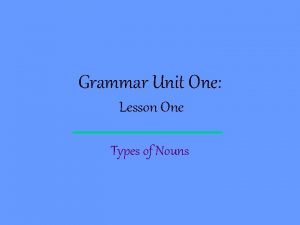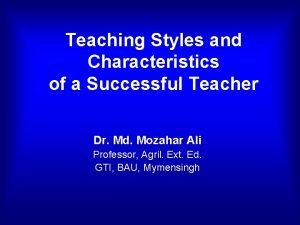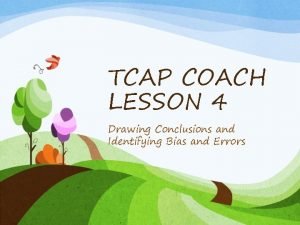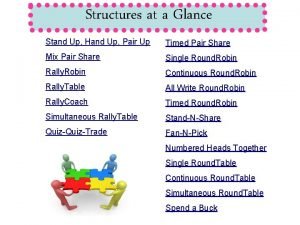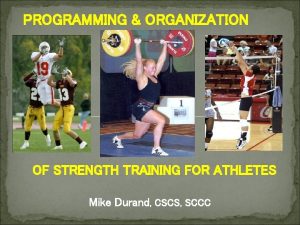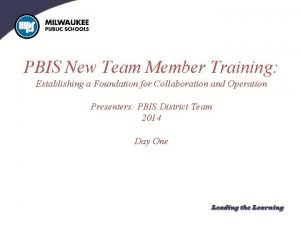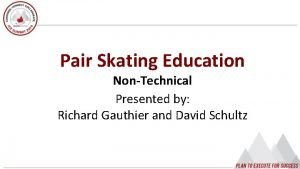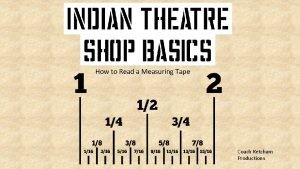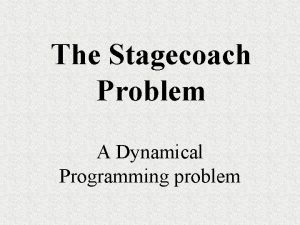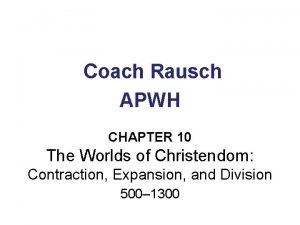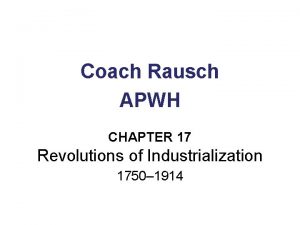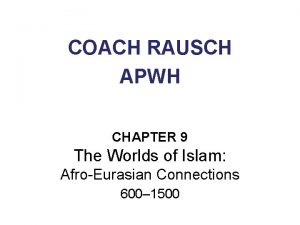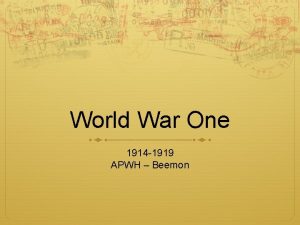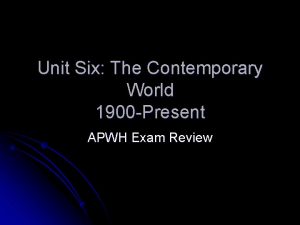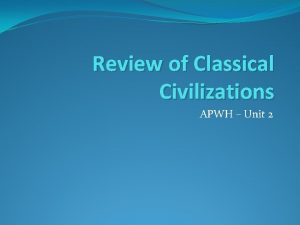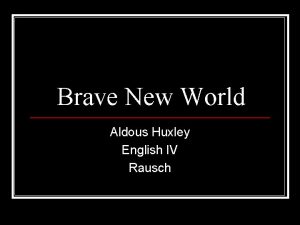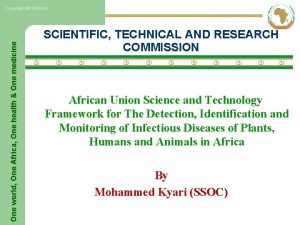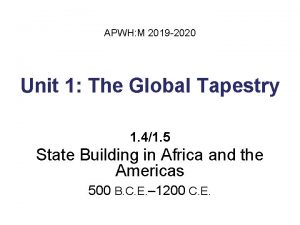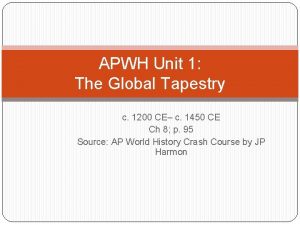AP World Review Coach Rausch APWH Unit ONE










































































- Slides: 74

AP World Review Coach Rausch APWH – Unit ONE

What do the questions look like s s s s The questions fall into 6 basic categories, which are as follows: Identification (35 -40% of the test) - simply test whether you know a fact, or facts. Analytical (20 -25% of the test) - makes you think about relationships, see connections, place in order. Quotation Based (10% or less of the test) match the quote with the appropriate person. Image Interpretation (10% or less of the test) determine images relevance, purpose, or meaning. Map Based Questions (10% or less of the test) identify what a map shows, or interpret it's purpose. Graph & Chart Interpretation (10% or less of the test) - interpret answer from data given in chart form.

Six Themes s The impact of interaction among major societies. – Such as Trade, International Exchange, War, and Diplomacy s s The Relationship of Change and Continuity across the periods of World History Impact of Technology and Demography on People and the Environment; – Including Population change, Manufacturing, Agriculture, etc. s s s Systems of Organization and Gender Structure Cultural and Intellectual Development and Interactions among Societies Change over time in functions and structures of Political States

Test Format s s s Exam last 3 Hours and 5 Minutes 55 Minutes for 70 Multiple Choice Questions 2 hours for essays – 50 Minutes for Document Based Question (10 minutes for Reading and Evaluating Documents) – 40 Minutes for Change Over Time Essay – 40 Minutes for Comparative Essay Question s Time Frames – Prehistory to 600 C. E: – 600 C. E-1450 C. E: – 1450 C. E- 1750 C. E: – 1750 C. E- 1914 C. E: – 1914 -Present: 19 -20% 22 % of 19 -20% of Questions of Questions

Grading s s s 70 Multiple Choice Questions = 1/2 Score Document Based Question = 16. 66% Change Over Time Essay = 16. 66% Comparative Essay = 16. 66% Essays Graded on Scale of 0 to 9 – Basic score (7) achieved before expanded score points (2) considered

Building Blocks of Civilization s What is a Civilization? – Economic System – Political Organization – Moral Code (Religion) – Written Language and Intellectual Tradition – Division of labor

Others ways to tell if it is a civilization s primary measurement is surplus – Something above the subsistence level – Indicators of more time s other characteristics of civilization include – Writing – Cities – established states.

Issues of Civilization vrs. Cultures s What advantages does an agriculturally based society have over a hunter/gatherer based society? – The greatest advantage is reliable food supply, and hence, the capacity to support larger populations. Agriculture produces surpluses, and those and agriculture's sedentary nature, open the door to specialization and a more elaborate culture, etc. s Why is the development of writing important in the history of the river valley civilizations? – Writing is essential for record keeping, bureaucracy, commerce, and accumulating knowledge; it also makes possible more varied cultural forms. Writing also led to new social divisions based on selective literacy. s Compared to noncivilized societies, what are the major drawbacks of civilization? – Often have inequality in social structure and gender as well as disease and war.

Stone Age s s Paleolithic Age (Old Stone Age) – Tools were used – Simple Huts – Fire Hunter Gatherer Societies – Family or Clan Groupings – Political Organizations Begin – Art and Music also practiced Agricultural Revolution: Neolithic Revolution – Occurred around end of Great Ice Age – Rapid Population Growth – Need for Change of Food Supply – New Skills Needed Pastoralism and Agriculture – Begins with Domestication of Plants and Animals

Results of Agricultural Revolution s s Many Diversified Crops developed Development of Communities and Villages – Not Based on family ties – Lead to formation of Cities s s Early Religions form around Harvest and Planting Seasons Specialization of Labor – Improved Tools – Development of Social Classes

Neolithic Revolution s What was it? – A period that saw the development of varied, specialized tools and accompanied the introduction of agriculture. s Initial results – It opened the potential for agriculture and the resultant differentiations with hunting and gathering. s Impact – People settled down and cities developed which led to complex systems developing and the change from societies to civilizations

Pre. History s s History Presence of a written language Writing is essential for record keeping, bureaucracy, commerce, and accumulating knowledge; it makes possible more varied cultural forms. Writing also led to new social divisions based on selective literacy. – Scribes – Scholarly gentry s Dark Age – Art of writing has developed and been lost

River Valley Civilizations s s Mesopotamia (between two rivers) – Tigris and Euphrates River Valley • Flooding unpredictable in both time and force – Fertile Crescent – Written Language: Cuneiform – Epic of Gilgamesh – Hammurabi’s Code Egypt – Nile River valley: Upper and Lower Egypt – Inundation: regular flooding Schedule – Monarchy: Pharaoh and Small class of Priests – Duality: Complex Religion, Mummification • Book of the Dead – Many great Inventions and Advances

Comparison of Egypt and Meso s Common features include writing, surplus, cities, and established governments; – Cuneiform – Hieroglyphics – Pyramids only different types (steppe dev. Into ziggurats) s Differences – – – cultural tone cultural features like ideas of death artistic forms literary emphases government organization and stability • Egypt placed more emphasis on monarchy and political stability and held larger territories for longer periods while Fertile Crescent had city-states that constantly vied for control of the area and form empires (Sumerians, Assyrians, Akkadians, Chaldeons, Babylonians, etc… – mobilization of labor Stability vs. Instability Fragmentation which required warlike technology and different issues of control

River Valley Civilizations s s Indus Valley – Indus and Ganges Rivers – Reason for decline not known – Highly unified and organized government – Artistic – Linear B China – Yellow River valley – Shang China: first dynasty – Monarchy – Bronze work, silk making, pottery, jade – Zhou Dynasty: Many Advancements • Mandate of heaven

Political structure tied to social order and culture by Confucianism s s s Confucianism emphasized order, hierarchy, and deference, including specific injunctions to obey the emperor. Bureaucracy aimed to alleviate political instability, difficulties of centrally controlling outlying provinces, and related competition among landed aristocrats for power and influence. Daoism also supports order by “one way or the way” although it didn’t support the emperor

Throughout pendulum changes in level and type of Confucianism s Qin dynasty outlawed Confucianism – Legalism encouraged actions based on law and furthered the totalitarian state • Actually began to develop in the Zhou dynasty but was used by Shih Huang Di to unite the region under his Qin dynasty – Different than Confucianism which was based on ethics and right behavior and “rites” or ceremonies which promote the social and political order s s Adopted as state religion under Wu Di of Han Dynasty Song Dynasty developed Neoconfucianism

Ancient Chinese Dynasties I. Early (Neolithic, then River Valley, Huang He) A. Yangshau - 6000 - 5000 Bce B. Longshan - 5000 - 4000 Bce II. Bronze Age (1500 -600 BC) A. Shang Dynasty (1500 -1122 bce) B. Chou (Zhou) (1122 -256 bce) 1. Early Chou (Zhou)1100 - 600 III. Classical Age (600 BC - 200 ad) A. Late Chou (Zhou) (600 -221 bce) 1. Confucius B. Chin (First Emperor) (221 -206 bce) (Shi hwang di) 1. First Called China C. Han (paper) (202 BC- 220 ad) 1. 90 % of Chinese consider themselves Han still today 2. Pax Sinica a. Wu Di (140 BC - 87 bce) IV. Age of Division (200 -600 ad) A. Three Kingdoms B. Northern and Southern (Wui, Sui) V. Medieval Age (600 -1200 ad) A. Tang (618 -907 ad) B. Sung (960 -1279 ad) VI. Yuan Dynasty or Mongol Age (1200 -1350 ad)

Impact s s It appears that the impact of the Indus is less than the Hwang Ho river-valley civilizations, because China was much less disrupted, and thus evidenced more continuities. What evidence could you use to show that Hwang He river valley had greater impact on the development of China than did the Indus River Valley (Mohenjo-daro and Harappa)

Southwestern Asia Civilizations s Persians – Created one of the largest empires on world history : from Turkey to Lybia – Cyrus the Great was first king, Darius the Great – Advanced Postal System, Roads, Single Currency, and Decentralized Government – Zoroastrianism: Primary Religion • monotheistic – Fell to Alexander the Great s Phoenicians – – – Syria and Lebanon Advanced Export Economy Skilled Traders Established Carthage First Alphabet

Southwestern Asia Civilizations s Lydians – Coined money s s Hebrews – Ethical monotheism – Monotheism represented a significant departure from polytheism in its concept of ethics and ideas of justice and in the extent to which the world was viewed as orderly. – Diaspora Assyrians Introduction of iron weapons Babylonians – – Significant law code • Code of Hamurabi

Meso. America s Did not have the large animals – Diseases that they carried were not present but made peoples of Mesoamerica vulnerable to disease when they connected to the Europeans in the second millennium s s Archaic period includes beginning of agricultural experimentation Olmec’s are the first preclassical civilization (ca. 1150 BCE) – site is San Lorenzo s s s Around La Venta about 35 BCE system of writing is present About 100 CE, at Teotihuacán, the Pyramids of the Sun and Moon and the Avenue of the Dead are erected at the "center of the universe" as monuments to the gods of creation Early Myans

Environmental determinism s s s Relationship between culture of a civilization, success and stability How does the culture react to the environment or environmental change Technology Movement of peoples into and out of the area Crossroads vs. isolation

Classical Civilizations and great empires • Early development (Archaic Period) • True Character of civilization • Imperial Era (Pax Era) Han Rome (Greco – Roman) Greek – Persian (Hellenistic) Gupta

Empires (Land based – Sea based) s s s Initial development Resources available Adaptability Demographic concerns – How can you feed your people – Usually some period where conflict between agricultural productivity and availability of luxuries – Have to placate the farmers and peasants – Labor concerns Period of great productivity and cultural advancement (Pax Romana, Pax Sinica, Pax Mongolica) – Less outside challenges from one source – Lots of minor challenges so have to increase army which means relying on those whom you conquered – Technological advancements to maintain empire (aquaducts for Romans) – Centralization of power s Decline – – – – Corruption Morality concerns Religious issues Economic crisis Succession and dynastic issues Expansion is required but cannot hold onto borders Outside invaders

s s s s Overview About 1200 BCE collapse and instability of civilizations in Mesopotamia or Southwestern Asia, North Africa, Southern Europe Hittites, Mycenaean, Egypt had outside invaders to deal with, We start seeing connections because they were interrelated; they probably influenced each other’s collapse These connections and the recovery of similar centralized “empires” creates the environment for great civilizations known as the classical era (set up by the Qin) Han, (Maurya and Asoka) Gupta, Greece, and Rome What were the strengths and weaknesses of each of the classical civilization – what made them “succeed” and what made them fail. (had to define succeed) Empire Political, Social, Economic, Education and Cultural aspects of each Intellectual Ideas (Great philosophies and religions) Technological Advancements that helped Geographic influences How did each civilization influence the other? Silk Road Role of merchants in society

Ancient Greece s s Aegean, Minoan, Mycenaean Civilizations – Trading Societies (enviornmental determinism) – Conquest (Trojan war) – Joined into single Culture called Hellenes or Greeks – Archaic period Greek City States: Polis – Athens, Sparta (Thebes, Corenthia, Attica, others) • Athens: educated, great thinkers – metics • Sparta: Warlike, Soldiers, Military Strength – Helots – xenophobic s Beginnings of Democracy – Golden Age – – Began in Athens Pericles Not full enfranchisement Most representative Government in Ancient World

Four Reformers (Tyrants) s s DRACO SOLON PISISTRATUS CLEISTHENES

Ancient Greece s s s Peloponnesian War – Conflict between Athens and Sparta – Left Greece Weak – Open to conquest from Persians and then Macedonian “Alexander the Great” Alexander the Great – Great Conqueror, took over Asia, Persian Empire, territory to borderlands of India – Spread Greek Culture throughout Eurasia Hellenic Culture – Science was important, Geometry, physics, mathematics and astronomy – Poetry (Homer), Drama(Sophocles, Aeschyles, Euripedes) Philosophy, (Socrates, Plato)

Persian s Achaemenid – Xerxes (Persian wars against Greek City States 499 BCE) s Seleucid, Parthian, and Sasanid – Buffer states for Rome and Kushan – Incorporated into the Islamic Empires beginning in 651 CE – Foundations of Safavids • Shah Abbas

s Oligarchy Forms of Government – Rule by a group of elite families or rule by a few s Monarchy – Leadership by one person passed through family – constitutional Monarchy limits to power by constitution or parliament (Pharaoh) s Republic – Citizens all participate in government – is government that is voted upon (elected) s Democracy – All citizens play the same role in government s Theocracy – Rule by the church or priests (No separation of Church and State) s Tyrant – takes control

Ancient Rome s Archaic Period – Etruscans, Sabines, Latium – Rome built 753 BCE s s s Roman Republic (509) last of Tarqiun kings – Tensions between Plebeians (lower class) and Patrician (upper class) called struggle of the orders – Beginning of Roman expansion – Punic Wars • Three Campaigns against Carthage • Rome was Victorious – Began expanding to the East (Greece, Balkans) Collapse of Roman Republic – Too Much expansion – Caused Social Problems, Civil wars – Solidification of Leadership under single hand Roman empire – Julius Caesar, Octavian (Caesar Agustus)

Eras of Rome s s Archaic – 753 BCE city of Rome is built Roman Republic – 509 s s Imperial Era Fall of Rome 476 CE – Odacer, Ostrogoth – City of Rome already sacked in 410 by Aleric, a Visogoth s Pax Romana (27 BCE – 180 CE) – Colluseum built – Aquaducts – Virgils “Aenid” – Livy – 5 Good Emperors

1. Temple of Jupiter on the Capitoline hill 2. Basilica Julia 3. Temple of Saturn 4. Rostra 5. Temple of Vespasian 6. Tabularium 7. Temple of Concord 8. Arch of Septimius Severus Urbanization

Silk Road s s Series of routes that connected east with west around the beginning of both Pax Romana and Pax Sinica gold and other precious metals, ivory, precious stones, and glass, which was not manufactured in China until the fifth century furs, ceramics, jade, bronze objects, lacquer and iron Most significant exchange was Buddhism

Han Dynasty s s Strongest and longest dynasty Expansionist Empire – Postal system – Roads – Defensive fortifications s Weak Leadership caused collapse – Corruption and leadership issues s s Had to protect the expanding borders some that encouraged trade along the silk road Silk road brought “bandits” that threatened the outer borders of the Han dynasty

India s s Aryans – Nomadic Group invaded India – Earliest Europeans – Conquered the Dravidians (Dark Skinned Indians) – Established Warrior Aristocracy – Established Sanskrit – Vedic Era and Early Hindu faith Caste System • Priests (Brahmins) • Warriors and Political Rulers (Kshatruyas) • Commoners • Servants and Peasants • The “Untouchables” – Born into Caste; Cannot be changed

India Continued s Mauryan empire – – s Ashoka: famous Emperor Converted to Buddhism Collapsed from outside attacks Laws of Manu Guapta Empire – Religious toleration – Muslim invaders

Cultural Development s s s India was more open to contact and invasion and less internally coherent than the Middle Kingdom (interior mountains etc), which helps explain the differences in openness to influence, and political stability. Ethnocentrism Xenophobia later

Role of Women Han and Gupta s s Both cultures were characterized by extensive inequality and patriarchalism; differences existed in social organization and tone of patriarchal culture. India showed more emphasis on beauty, cleverness, and sexuality in women, while China displayed a more stereotypical emphasis on female deference.

Societal comparison s s China's society featured less rigid structure, slightly more opportunity for mobility although there was some mobility within castes different rules and cultural enforcements Law of Manu vrs. Confucianism different regard for merchants and specific contrasts in the definition and function of "mean people" versus untouchables. – Dharma encouraged merchants in Gupta – Merchants brought outside cultures and were not socially accepted

Environmental Determinism s s India was more open to contact and invasion and less internally coherent than the Middle Kingdom (interior mountains etc), which helps explain the differences in openness to influence, and political stability India absorbed other cultures while China remains ethnically homogeneous (90 % of all Chinese trace their ancestry back to the Han dynasty)

Regionalized to Unified s Harappan and Chinese civilization. s Responses of Harappan and Chinese civilizations to contacts with outsiders and external migration. – 1 st consider their agricultural systems, religious practices, and political organization. Both agricultural systems were based on irrigation; the Harappans grew wheat, rye, peas, and rice; the Chinese produced millet and silk. – In religion the Harappans emphasized fertility rituals; they had a pantheon of gods, the most significant of which may have been a nude male deity with horns; there might have been ritual bathing. The early Chinese also were concerned with fertility and practiced human sacrifice; divination was practiced on animal bones. – In political organization Harappan society was closely supervised from Harappa and Mohenjo-Daro; a priestly elite probably ruled. The Chinese were governed through feudalism: decentralized under the Shang, centralized under the Zhou. – Harappan civilization was conservative, but it did have commercial contacts with foreigners; it was unable to withstand the migration of the Aryans. The Chinese were able to handle migration by absorbing invaders. The Zhou might replace the Shang, but the fundamental nature of Chinese civilization remained.

East Asia s Political centralization under the Qin and Han dynasties. s Social organization of China under the Zhou and Han dynasties. – They include: the development of appropriate political philosophies; the contributions of Confucius and his disciples; other philosophies (Daoism, Legalism); the institutionalism of the teachings of Confucius in the examination system; the rise and triumph of the shi; the destruction of regional states and the feudal aristocracy; the creation of a unified political infrastructure. – Zhou China was based upon the existence of a regional aristocracy that governed as feudal vassals; the aristocracy were often members of the royal family and more closely controlled by the dynasty than under the earlier Shang rulers. Beneath the warriors were the peasantry and artisans. Han China was ruled by the imperial family and the shi who evolved into the scholar-gentry. The peasantry was divided into those with land those without who served as agricultural laborers; artisans were growing in numbers; – merchants were becoming wealthy but remained with low social status. The clear difference between the Zhou and Han was the replacement of the feudal aristocracy by the scholar-gentry and the growing importance of artisans and merchants.

Social system s Importance of the brahmans and the caste system to Indian development. – In India, despite the achievements of the Maurya, Kushana, and Gupta empires, a division into many petty states governed by the Aryan warrior elite was most common. – The duration of empires was relatively brief. – Conversely, Indian social organization, although it became more complex and rigid as time passed, was constant throughout the classical period. – The brahmans enjoyed both social dominance and religious authority; they were one of the highest castes and were monopolists of the rituals associated with the Vedas. – Except for the Maurya empire under Ashoka, governments accepted the social position of the brahmans and patronized their religious authority.

Comparison’s of Classical Civilizations s Roman and Han – Similarities include timeframe and chronologies; • geographical extent, the need to integrate large territories, the use of some central bureaucracy, and the army. – Differences helping to explain Rome's earlier demise • • s cultural support for imperialism despite law, no equivalent to Confucianism; more tolerance of local rule; more dependence on expansion for labor supply, etc. Also, Rome suffered some bad luck, perhaps, in the form of invasions Greek and Roman political structures – Similarities • emphasis on aristocratic principles with some democratic elements, localism, and citystate units. – Differences • Rome had more emphasis on unifying laws and more success in developing institutions for empire. (Students could be assigned some additional reading on this topic. ) s Greek, Roman, and Confucian ideals. – All three share common political emphases such as the importance of loyalty, service, and hierarchy. – Greek and Roman ideals were more aristocratic, though, where Confucian ideals stressed training and responsibility, Confucianism focused more on political order and imperial hierarchy. – Greece and Rome were similar to each other, but Rome emphasized law and experienced tension between local and imperial orientations from late Republic onward as a result.

Economic Exchange s s s Merchant's roles in India where they enjoyed cultural support via applicable features of dharma in the Mediterranean, which students can position as an intermediate case needing careful treatment, foreigners and some differences between Greece and Rome. China, emphasize cultural stigma

Decline of Classical Empires s Han and Rome exhibited different degrees of political centralization and bureaucratization and different degrees of prior cultural integration. Rome faced more invasions and you need to note the success of "eastern Rome". outside factors – invasions – disease s internal problems of – morale – political structure – economics

Religions Universal Ethnic Syncretic State Animism Pagan

Religions s s Judaism (8000 – 6000 BCE) – Hebrews – Monotheistic • YAWEH – Covenant – Monotheism represented a significant departure from polytheism in its concept of ethics and ideas of justice and in the extent to which the world was viewed as orderly. Islam (632 CE) – Founded by Muhammad – Five Pillars – Allah

Classification s Three universal religions – Christianity – Buddhism – Islam s Three Monotheistic – Christianity – Judaism – Islam s Cultural/ethnic religions – Confucianism – Judaism – Shintoism

Religions Continued s Christianity (1 st Century CE) – Messiah: Jesus – Paul Changed Christianity • Among other innovations, he opened the faith to non-Jews and shifted its orientation more toward the Greco-Roman intellectual tradition – Evangelical – Catholicism • Split into eastern and western later to become catholic and orthodoxy • Reformation beginning 1517 created Lutheran and Calvinism later to become Protestant churches with Puritans and anti-baptists

Eastern Religions s Hinduism (2000 BCE) – Bramin, Multiple Gods, Darma (Obligation to pursue assigned duties in life, according to caste) , Karma, Reincarnation Buddhism (500 BCE) – 4 Noble truths – 8 fold path – Nirvana - concept of union with divine essence – Theravada Buddhism (sometimes called Southern Buddhism; occasionally spelled Therevada) "has been the dominant school of Buddhism in most of Southeast Asia since thirteenth century, with the establishment of the monarchies in Thailand, Burma, Cambodia and Laos. " – Mahayana Buddhism (sometimes called Northern Buddhism) is largely found in China, Japan, Korea, Tibet and Mongolia. – Tibetan Buddhism, which developed in isolation from Theravada and Mahayana Buddhism because of the isolation of Tibet. – Since the late 19 th century: – Modern (Zen) Buddhism has emerged as a truly international movement. It started as an attempt to produce a single form of Buddhism, without local accretions, that all Buddhists could embrace. Daoism (Taoism) 500 BCE) 26 million – Lao Tu (Zu) – The Way – Harmony with Nature – State religion began an ended with Ch’in dynasty ca. 200 BCE

Monks, Monasteries and Pilgrims s Faxian, a pilgrim from China, records the religious life in the Kingdoms of Khotan and Kashgar in 399 A. D. in great detail. describes the large number of monasteries that had been built, and a large Buddhist festival that was held while he was there. At the point where religions meet in Asia was also the place of great wealth because merchants increased their wealth and also changed their religion often attributing their success to the new religion – They became patrons – build monasteries, grottos and stupas

Confuiansim: religion or state control s s K'ung Fu (551 BCE) - State religion by Han dynasty around 206 CE Obedience (ritual, filial piety, loyalty, humaness, gentleman) – – – Li: includes ritual, propriety, etiquette, etc. Hsiao: love within the family: love of parents for their children and of children for their parents Yi: righteousness Xin: honesty and trustworthiness Jen: benevolence, humaneness towards others; the highest Confucian virtue Chung: loyalty to the state, etc. – – Adopted by the elite class, literacy an issue peasantry needed religious beliefs more tied to agricultural issues and cycles the lack of spirituality in Confucianism Added pileal fility – Si Shu or Four Books: The Lun Yu the Analects of Confucius The Chung Yung or the Doctrine of the Mean The Ta Hsueh or the Great Learning The Meng Tzu the writings of Meng Tzu (371 -289 BCE) a philosopher who, like Confucius, traveled from state to state conversing with the government rulers Wu Jing or Five Classics: Shu Ching or Classic of History: writings and speeches from ancient Chinese rulers The Shih Ching or Classic of Odes: 300 poems and songs The I Ching or Classic of Changes: the description of a divinitory system involving 64 hexagrams. The hexagrams are symbols composed of broken and continuous lines; one is selected to foretell the future based on the casting of 49 sticks. The Ch'un Ch'iu or Spring and Autumn Annals: a history of the state of Lu from 722 to 484 BCE. The Li Ching or Classic of Rites: a group of three books on the LI the rites of propriety s At first not accepted s Classic books – s Controls 4 stages of life s First class developed known as shi (knights) later civil service exams and scholars or scholarly gentry – Birth, maturity, marriage, death

Religion or not s Neoconfucianism – Tried to blend Buddhists and Taoist secular ideas into the political ideas of Confucianism – Began about 1000 CE s s During periods of confucean hegemony like Song, Ming and Qing dynasties, it can be identified roughly with the social class of government officials. Manchu or Qing tried to use it to stay in power and tried to remove the Buddhist “contamination”

Buddhism, Confucianism, Daoism in China s s s s Buddhism adapted to Chinese political and patriarchal traditions. Chinese Buddhists also tended to worship the Buddha and placed more emphasis on saintly intermediaries than believers elsewhere. Confucianism emphasized order, hierarchy, and deference, including specific injunctions to obey the emperor. Daoism emphasizes balance and harmony Confucianism's good life stressed the need for order, hierarchy, and mutuality within hierarchy. Ancestor worship encouraged a conservative political outlook because it encouraged veneration of past achievements and the idea that innovation might displease China was able to support two systems of Dao and Confucianism and later was able to incorporate Buddhism as it adapted to the Chinese traditions

Syncretic Religions s Sikhism Jainism Afro-Caribbean Syncretic s Ivory Coast – blend of Islam and Catholicism s Zorasticism s s – – – Candomble Palo Mayombe Santeria (Lukumi, Regla de Ocha) Vodoun (Voodoo) Umbanda – Harrism

Social or Political s The Caste system seems to have emerged as a means of organizing relations between Indo-European conquerors and indigenous people and was preserved by strict rules of occupation and Hindu beliefs in dharma and reincarnation.

Political control s Hinduism and Confucianism – Both very structured – Had otherworldly and secular goals – China's greater emphasis on political structures as compared to India's more varied and diverse political experience. – Environmental determinism – Confucianism and the bureaucratic structure helped hold the Han empire together – Rome had no equivalent and did not support Christianity until it had already split – Byzantine may have survived because of the religious structure adopted by the post Justinian Emperors and the adaptation of Christianity into a more Orthodox religion (structured)

State Religions s Shinto – State religion of Japan (becomes state religion during Meiji period. Church and state separated after WWII – "Shinto gods" are called kami. • They are sacred spirits which take the form of things and concepts important to life, such as wind, rain, mountains, trees, rivers and fertility. • Humans become kami after they die and are revered by their families as ancestral kami – No absolutes

Animism Paganism s s Doctrine or religion? Everything has a soul or spirit

Growth of Dar Islam or Islamic World s s – Ummyads Abbasids (750 -1258 C. E. ) Harun Al-Rashid high point – – – • Showed no special favor to Arab military aristocracy • No longer conquering, but the empire still grew Abbasid administration • Relied heavily on Persian techniques of statecraft • Central authority ruled from the court at Baghdad • Appointed governors to rule provinces • Ulama ("people with religious knowledge") and qadis (judges) ruled locally Harun al-Rashid (786 -809 C. E. ), high point of Abassid dynasty Abbasid decline • Struggle for succession between Harun's sons led to civil war • Governors built their own power bases • Popular uprisings and peasant rebellions weakened the dynasty • A Persian noble seized control of Baghdad in 945 • Later, the Saljuq Turks controlled the imperial family

Caliphates s Split in Islamic believers after the death of Mohammed – Sunni and Shiite – “Caliph” - leader of the Islamic faith s s Umayyad Caliphate 661 -750 Abbasid Caliphate 750 -1258 – Golden age of Islamic Culture s s 1350 -1918: Ottoman Empire 1501 -1723: Safavid Empire

Difference between Abbasid and Ummayyad s s Both were essentially absolutist in structure, but the Abbasids introduced greater formalism and a more rigorous bureaucratic structure featuring the wazirs Abbasid dynasty originally based on claims of descent from family of the Prophet (Shi'a), but eventually moved to suppress Shi'ite movements Abbasids incorporated mawali or non-Arab converts into full citizenship and participation shift of center of empire to capital at Baghdad in Persia

Dispute over succession of the Prophet s s s Muhammad never specified a principle of succession immediate successors elected from among first converts to Islam; debate following murder of Uthman and selection of Ali Shi'as supported only familial descendants of the Prophet as rightful rulers; Umayyads established hereditary dynasty after defeat and death of Ali Sunnis supported concept of dynastic succession

Arabic role of women vs. Intro of Islam s s Arabic – Based on kin-related clan groups typical of nomadic pastoralists; – grouped into larger tribal units, but seldom lived together; – wealth and status based on possession of animals, pasturage and water rights; – slavery utilized; – common incidence of feuds. – Women in pre-Islamic culture enjoyed greater liberty than those of Byzantium or Persia; – played important economic roles; – in some clans descent was matrilineal; – not secluded; – in some clans both males and females allowed multiple marriages. Islamic- Abbasid Empire: – under influence of Persian culture, women veiled and secluded – increase in patriarchal authority – only males permitted multiple marriages – development of the harem.

Appeal of Islam s s s s Universal elements in Islam: unique form of monotheism appealed to other monotheistic traditions Egalitarianism legal codes strong sense of community in the ummah; Muhammad's willingness to accept validity of earlier Judaic and Christian revelations appeal of "five pillars" of faith.

Social organization of Arabs before Islam s s s Based on kin-related clan groups typical of nomadic pastoralists grouped into larger tribal units, but seldom lived together wealth and status based on possession of animals, pasturage and water rights slavery utilized common incidence of feuds

Spread of Islam s s s Incursion of Islam into Southeast Asia almost entirely as a result of establishment of trade routes from Muslim ports in India Sufi mystics and traders carried Islam to port cities within Southeast Asia from port cities Islam disseminated to other regions because of Indian and Sufi background, less rigorous emphasis on strict interpretation of texts and laws more incorporation of indigenous religious beliefs.

Issues of Religion during Postclassical era s s s Carolinigans vs. Ummyads – Battle of Tours Funan – Southeast Asia Buddhist Empire King Stephen of Hungary converts to Christianity 1000 CE – Battles with pagan Magyars for control of Carpathian region s s s Vikings in the dress of Normans begin to rule England after the Battle of Hastings in 1066 Olaf introduced Christianity in Norway 1015 Canute to the Danes around the same time Settling down of nomads begins Vladimir for the Rus around 900 CE Crusades

Central Europe s s Rurik the Viking or Vanagans settled Keiv (Kievan Rus) Yaroslav the Wise – Pravda Ruskia • Russian Law Code adapted from Justinian s Vladimir adopts Christianity for his empire

Byzantine Political Structure Orthodox s s s s Emperor held all power viewed as divinely ordained ruler supported by elaborate court ritual government in hands of trained bureaucracy with eunuchs in positions closest to the emperors local administrators appointed by central bureaucracy military recruited from empire's population by grants of heritable land in return for military service growth of authority of local military commanders at expense of traditional aristocracy.

Fall of Byzantine s s s s Series of external threat to empire Turkish invasions seized Asiatic portions of empire after 1071 reduced food supplies and tax base of empire growing economic and political power of western Europe led to inroads on Constantinople's economic position western crusade in 1204 temporarily conquered Byzantine capital rise of independent Slavic kingdoms in Balkans challenged Byzantine authority there Ottoman Turks conquered Constantinople in 1453.
 Apwh final exam review
Apwh final exam review Coach k vs coach knight
Coach k vs coach knight Traliccio di rausch
Traliccio di rausch Unit 6 review questions
Unit 6 review questions Long essay question ap world
Long essay question ap world Ap history thesis examples
Ap history thesis examples 1450*3
1450*3 Ap world course and exam description
Ap world course and exam description Saqs ap world history
Saqs ap world history Caravel apwh
Caravel apwh Unit test algebra 2
Unit test algebra 2 Sin entered through one man
Sin entered through one man One god one empire one religion
One god one empire one religion One one little dog run
One one little dog run One king one law one faith
One king one law one faith Byzantine definition
Byzantine definition One ford behaviors
One ford behaviors See one do one teach one
See one do one teach one See one, do one, teach one
See one, do one, teach one Twelfth night speeches
Twelfth night speeches See one do one teach one
See one do one teach one One vision one identity one community
One vision one identity one community One vision one identity one community
One vision one identity one community Unit one lesson one
Unit one lesson one Lesson 1 english
Lesson 1 english Chapter review motion part a vocabulary review answer key
Chapter review motion part a vocabulary review answer key Ap gov review final exam review
Ap gov review final exam review Nader amin-salehi
Nader amin-salehi Traditional and systematic review venn diagram
Traditional and systematic review venn diagram Narrative review vs systematic review
Narrative review vs systematic review Sports coach roles
Sports coach roles Life balance coach
Life balance coach Digital storyteller coach coaching
Digital storyteller coach coaching Facilitation style in teaching
Facilitation style in teaching Tcap coach books
Tcap coach books Submissive coaching style
Submissive coaching style Stand up handup pair up strategy
Stand up handup pair up strategy Neuro eye coach
Neuro eye coach Scei coach meaning
Scei coach meaning Twu learning coach
Twu learning coach Mike durand strength coach
Mike durand strength coach Pbis team roles and responsibilities
Pbis team roles and responsibilities Tom schwartz tinman
Tom schwartz tinman Mcdp1 defines trust as a product of which of the following
Mcdp1 defines trust as a product of which of the following Kenny carter basketball
Kenny carter basketball Kagan rally coach instructions
Kagan rally coach instructions Hbsp for educators
Hbsp for educators Oumar coach origine meme
Oumar coach origine meme Coach agile
Coach agile Dear coach letter
Dear coach letter Concepto de coaching
Concepto de coaching Six images of managing change essay
Six images of managing change essay Cash flow coaching kit
Cash flow coaching kit Coach pitch all stars
Coach pitch all stars Bruno juliani coach
Bruno juliani coach Coach /parent meeting agenda
Coach /parent meeting agenda Richard gauthier
Richard gauthier Nlp master
Nlp master How to read a tape measure
How to read a tape measure Functional strength coach
Functional strength coach Forest lake football
Forest lake football Dwp eo work coach
Dwp eo work coach Devenir coach agile
Devenir coach agile Antique coach excursions
Antique coach excursions Birth coach method
Birth coach method Myupwards
Myupwards Stage coach problem
Stage coach problem Pitch deck coach
Pitch deck coach Recovery coach training illinois
Recovery coach training illinois Radnor naviance
Radnor naviance Radnor naviance
Radnor naviance Legal and ethical responsibilities of a coach
Legal and ethical responsibilities of a coach Growth accelerator coach
Growth accelerator coach Henry harutunian
Henry harutunian Melita schmitz
Melita schmitz























